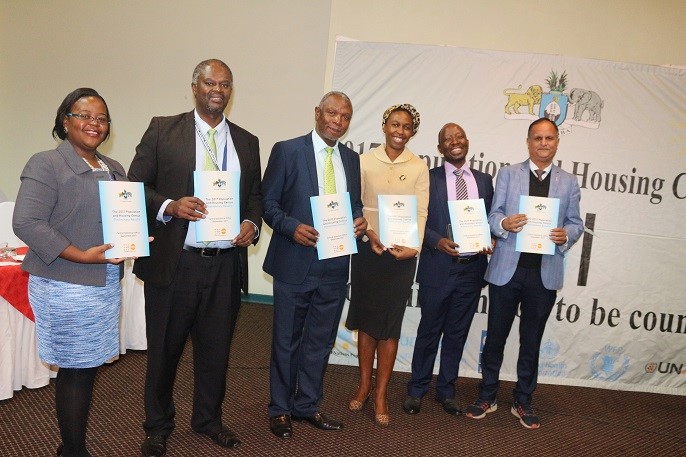Swaziland has a population of 1,093,238 people according to the 2017 Census Preliminary Results launched by the Deputy Prime Minister Mr. Paul Dlamini who was representing the Right Honourable Prime Minister Dr. Sibusiso Dlamini on 9th November, 2017. Of this figure, 562,127 are females and 531,111 are males. This effectively means that the population of Swaziland increased by 74,789 persons in the ten-year period 2007 to 2017. This represents an annual growth rate of 0.7 percent. In terms of regions, Manzini remains the most populous region with 355,945 inhabitants, followed by Hhohho with a population of 320,651. Lubombo is next with a population of 212, 531 and the least populated region is Shiselweni with 204,111 inhabitants.
“The increase in the size of our population is primarily due to three demographic factors namely fertility, mortality and migration rates. An in-depth analysis of the census data will, in due course, be undertaken to produce precise identification and analysis of the cause of the population increase confirmed by the 2017 census” said the Deputy Prime Minister.
The data have been collected and analysed according to international standards with technical support and guidance from international experts. The United Nations Population Fund (UNFPA) provided the technical support, procured mobile census equipment, and also supported South-South information exchange programmes as well as other regional training programmes. Other United Nations agencies namely UNICEF, UNDP, WHO, WFP and UNAIDS, also provided financial support to ensure a successful digital census. In the spirit of South South collaboration, the South African Government also lent 3000 tablets, at no cost, to the Swaziland Government for use during data collection.
Speaking at the event, UNFPA Representative, Sharareh Amirkhalili reiterated that “the 2017 Population and Housing Census is a very special census because it represents a major shift in the collection of census data, that is; from a paper based data collection system to one that is digital”. She further mentioned that this shift was historical in the Southern Africa region because Swaziland was the second country after Lesotho and the fifth in the Africa continent after Senegal, Lesotho, Cape Verde and Ivory Coast to migrate to a digital census.
“Census data are an important working instrument that allows us to know the socio-demographic realities and to gauge the effects of our Government activities on important social indicators”, observed the Minister of Economic Planning and Development who also spoke at the event.
In the same vein, the UNFPA Representative noted that “Census data is at the heart of ensuring that no one is left behind because it provides data even for the smallest geographic unit” further adding that “The 2030 Agenda on the Sustainable Development Goals is premised on the assumption that every country will be able to identify and locate the most vulnerable people, identify interventions that result in the greatest improvements in their welfare, and monitor progress over a wide array of national and international targets.”
The Preliminary Results also showed that the working age population increased by 3 percentage points i.e. from 56.7 percent in 2007 to 59.7 percent in 2017, whilst the population age 0-14 years declined from 39.5 percent in 2007 to 35.6 percent in 2017. This is a fall of 3.9 percentage points. These changes in the age structure of the Swazi population point to an urgent need to step up investments in the education, health and employment of young people to enable Swaziland to harness the demographic dividend. “This trend shows an opportune time for the country to take advantage of this demographic dividend”, emphasized the Deputy Prime Minister. The UNFPA Representative echoed similar sentiments and noted that “Swaziland’s population remained predominantly young and therefore on the verge of an economic boom which, however, could only be realized if the country invested in its children and young people’s health, education as well as in productive employment”.
Working with the United Nations System in Swaziland particularly UNFPA, the Central Statistical Office will undertake further analysis of the census data in various thematic areas and to disseminate this valuable information for programme monitoring and evaluation as well as policy formulation.

Representatives from the UN,government and development partners listening attentively to speeches during the launch

Director of the Central Statistics Office Mr. Amos Zwane, third from left, flanked by his team members during the launch

